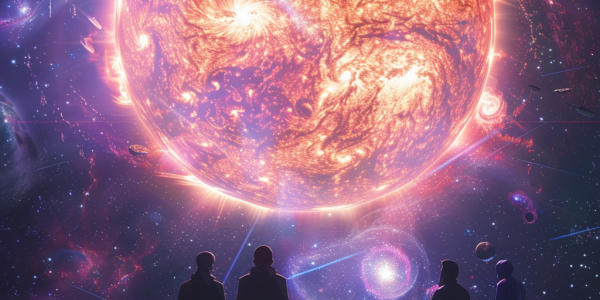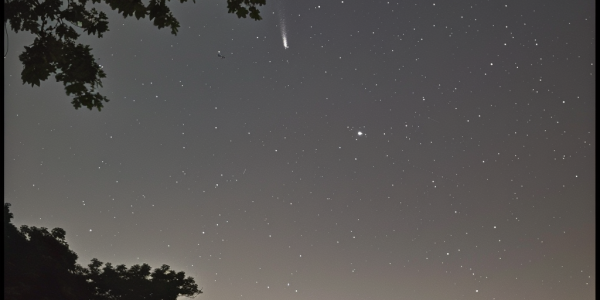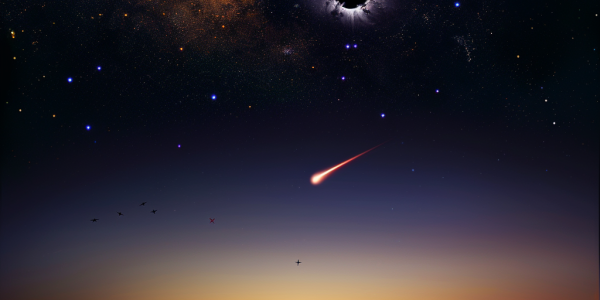Harnessing the Sun: A Revolutionary Concept for Cosmic Exploration
Scientists are exploring the revolutionary concept of transforming the Sun into a colossal telescope using gravitational lensing, potentially enhancing our ability to observe distant galaxies and celestial phenomena. This innovative approach could lead to groundbreaking discoveries in astronomy while offering a cost-effective alternative to traditional space telescopes. As researchers investigate the feasibility of this idea, the future of cosmic exploration looks promising.
Prepare for the T CrB Nova: A Spectacular Celestial Event in 2024
Get ready for a spectacular astronomical event in late 2024 as the T Coronae Borealis (T CrB) nova explosion lights up the night sky. This rare celestial phenomenon, expected to shine 1,500 times brighter than usual, offers a unique opportunity for stargazers and astronomy enthusiasts. Discover how to prepare for this breathtaking event and witness the dynamic beauty of our universe.
Reigniting Curiosity: Dyson Spheres and the Universe’s Missing Mass
Recent studies have reignited curiosity in Dyson spheres, massive theoretical structures that could harness the energy of stars. Could these spheres hold the key to unlocking the mystery of the universe’s missing mass? Despite skepticism, physicist Freeman Dyson’s idea continues to intrigue scientists, but the feasibility of complete Dyson spheres remains questionable. Exploring the enigma of missing mass in the universe, astronomers ponder the potential role of vast gas filaments bridging galaxies. While Dyson spheres may not solve this mystery, Dyson swarms or rings could offer a more practical avenue for investigation.
Rare Explosion on Dwarf Star to Captivate Stargazers Worldwide
A rare explosion on a dwarf star, T Coronae Borealis, is set to captivate stargazers worldwide as it reappears after 75 years. Known as a recurrent nova, this celestial event offers a once-in-a-lifetime opportunity to witness a spectacular outburst in the night sky, shining as brightly as the north star in the northern hemisphere. Astronomers and enthusiasts eagerly await this cosmic spectacle, labeled by Nasa as a ‘once-in-a-lifetime’ occurrence.
Astronomy Enthusiasts Await Potential Brightening of ‘Blaze Star’ T Coronae Borealis
Astronomy enthusiasts are eagerly anticipating the potential brightening of the star system T Coronae Borealis, also known as the ‘Blaze Star’, located 3,000 lightyears away. This celestial event, known as a ‘nova’, could see the star’s brightness increase significantly, making it visible to the naked eye for a brief period. Learn more about this rare astronomical occurrence and how to observe it in the night sky.
Newly Discovered Satellite Galaxies Surrounding HSC-SSP Area Unveiled by Researchers at Tohoku University
A recent study by researchers at Tohoku University has uncovered numerous satellite galaxies in the HSC-SSP area, previously unknown and identified through advanced technology. This discovery provides valuable insights into the cosmos, shedding new light on the Milky Way, dark matter, and the dynamics of the universe.
Rare Comet to Grace Night Sky for First Time in Nearly 70 Years
Astronomy enthusiasts are in for a treat this summer as Comet 13P/Olbers will be gracing the night sky for the first time in nearly 70 years. Experts suggest the best visibility will be around June 30, making it a rare celestial spectacle not to be missed.
NASA’s James Webb Space Telescope Discovers Ancient Stars and Massive Black Holes in Young Universe
NASA’s James Webb Space Telescope has made a groundbreaking discovery of ancient stars and massive supermassive black holes in the early universe, challenging existing theories of galaxy evolution and black hole formation. The findings, announced in Astrophysical Journal Letters, reveal objects dating back to 600–800 million years post-Big Bang, with stars hundreds of millions of years old and black holes 100 to 1,000 times larger than the one in our Milky Way.
2024 Promises Exciting Year for Skywatchers with Celestial Events
The year 2024 promises exciting celestial events for skywatchers, including a total solar eclipse on April 8 and the annual Perseids meteor shower in August. From planetary alignments to meteor showers, astronomy enthusiasts can look forward to a year full of awe-inspiring moments. Find out how to prepare for these events and make the most of your stargazing opportunities with Stacker’s guide.
James Webb Space Telescope Captures Stunning Details of Crab Nebula
The iconic Crab Nebula has been captured in exquisite detail by the powerful James Webb Space Telescope, revealing intricate cage-like formations formed by dust grains. This latest mosaic offers a fresh perspective on the enigmatic supernova remnant, providing valuable insights into its origins. Stay tuned for more updates on this captivating celestial object as astronomers continue to unravel its mysteries.










